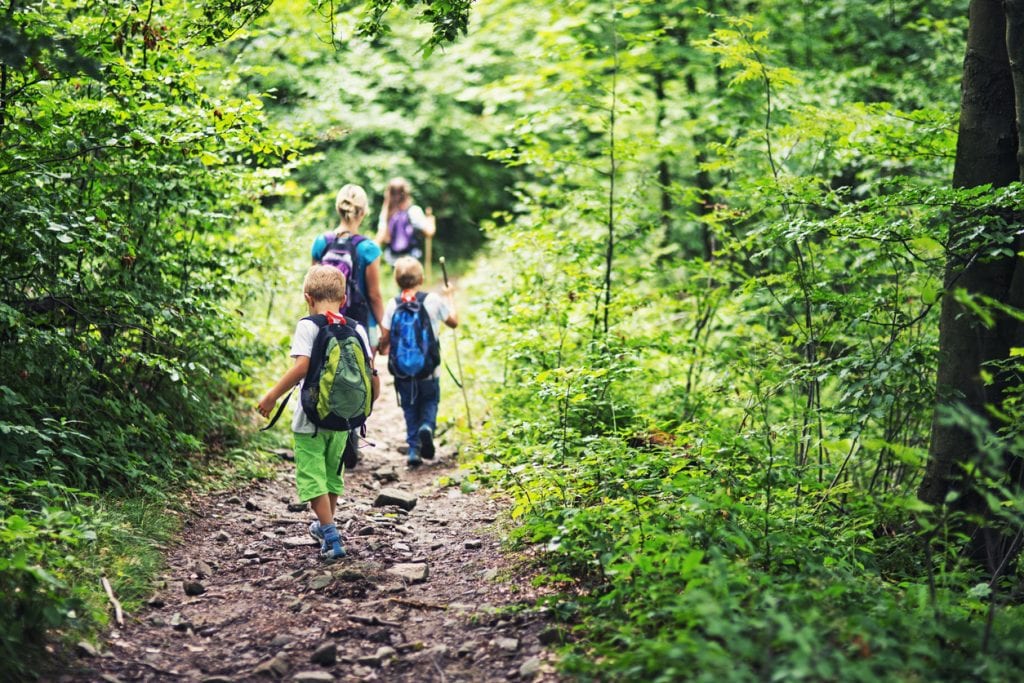We live in a paradox. On the one hand, we proudly uphold creativity, progress, and civilization that is built on human ingenuity. On the other, we distance ourselves from the very source of our inspiration and creativity. This paradox has been created by various lifestyle choices and practices. We practice these every day, deepening the chasm.

This distance causes numerous issues. Humans need to spend time in nature every day. Immersion in nature has positive lifetime consequences. Nature is the only non-addictive, safe, and completely organic way to re-balance us and de-stress ourselves. Studies show that interaction with nature reduces cognitive deficiencies, mood disorders, and other health issues. Healing effects of nature are also well studied.
In recent decades, children have been raised extensively on mobile or electronic devices. Extensive use of electronic devices for meeting all their needs- social interaction, music, shopping, reading, or completing homework- has left the generation challenged in real life interactions. While it is convenient to have the technology to accomplish a lot more within a short time and with the click of a keyboard, the concern here is developing dependence and over-use of technology. Devices with screen has the potential to become addictive. Technology addiction is a real condition.
Here are some startling findings of teenagers and technology addiction:
- Teenagers with technology addiction have poor self-rated health, happiness, and high higher levels of depression.
- Technology addiction can lead teenagers to develop brain chemistry and neural patterns that are like teenagers who have substance abuse problems.
- Lack of sleep, weight gain, poor diet, sedentary lifestyle, and deterioration of social skills are other side effects of technology addiction.
Wilderness therapy places the affected individuals in technology-free situations. The days are filled with other activities to make their routines and social interactions complete. Without the option to return to their electronic device, the participants are forced to re-evaluate their choices without the distraction provided by technology. In this therapy, participants change their lifestyle choices and routine. A significant change in the routine involves waking up early and settling in early, following the body rhythm and nature clock.
Lifestyle choices include spending more time outdoors, such as a long hike in natural setting, learning new skills such as identifying plants and animals, taking the time to socialize and stay connected more by writing journals. Also having a counselor at hand to discuss their behaviors and a coach who helps them develop new habits to take home.
Being outdoors in nature for extended periods, especially if one has no familiarity with the activity, can be physically and emotionally challenging. One of the best side effects of spending time outdoors with nature is the decrease in cortisol levels. The cortisol hormone is released in times of high stress. Being in nature also reduces noise and distractions. These conditions are conducive in helping to develop strength of will and determination. Even amid challenging physical tasks, nature provides a peaceful, calming, and a perfect setting for meditation of issues. Nature setting, with diverse stimuli, allows for increased expansion of physical and mental capabilities. In a natural setting, with support from experienced and knowledgeable people, teenagers undergoing wilderness therapy experience an increased hope, internal locus of control, self-confidence, and self-concept. They also develop improved interpersonal relationships and social skills.
In June 2018, the World Health Organization included ‘gaming disorder’ as a mental health condition. Over at least 12months, an individual with gaming disorder gives precedence to gaming over social, personal, family, educational or occupational concerns of life. Below are some prompts to check our own technology use:
- Has the use of technology or device increased?
- Do you feel guilty about the increased use of the device?
- Have you experienced an urge to use the device in the middle of your tasks?
- Does using the device uplift your mood?
- Do you experience a thrill when you use the device?
- When you are unable to use the device do you experience discomfort?
- Do you feel time flies when you use the device?
- How do you feel when you have tried to reduce the time with device?
- Have people complained to you about your use of device? Have you continued to use?
These questions guide our awareness to any possible concerns and seek out alternate activities to reduce the use and dependence upon technology.
Experts suggest that we spend more time in nature by scheduling tech time-out and digital detox. Hiking outdoors, playing in nature, jogging or swimming or biking, spending the day on the beach, camping, and other nature-related activities that will take us away from technology will be beneficial.
Long-term detox from social media or emails has shown to improve vision and even short immersion in nature helps one develop more self-awareness and mindful practices. In our busy lifestyle and juggling multiple responsibilities, we should make time for nature a priority. The connection is too crucial for human survival.

